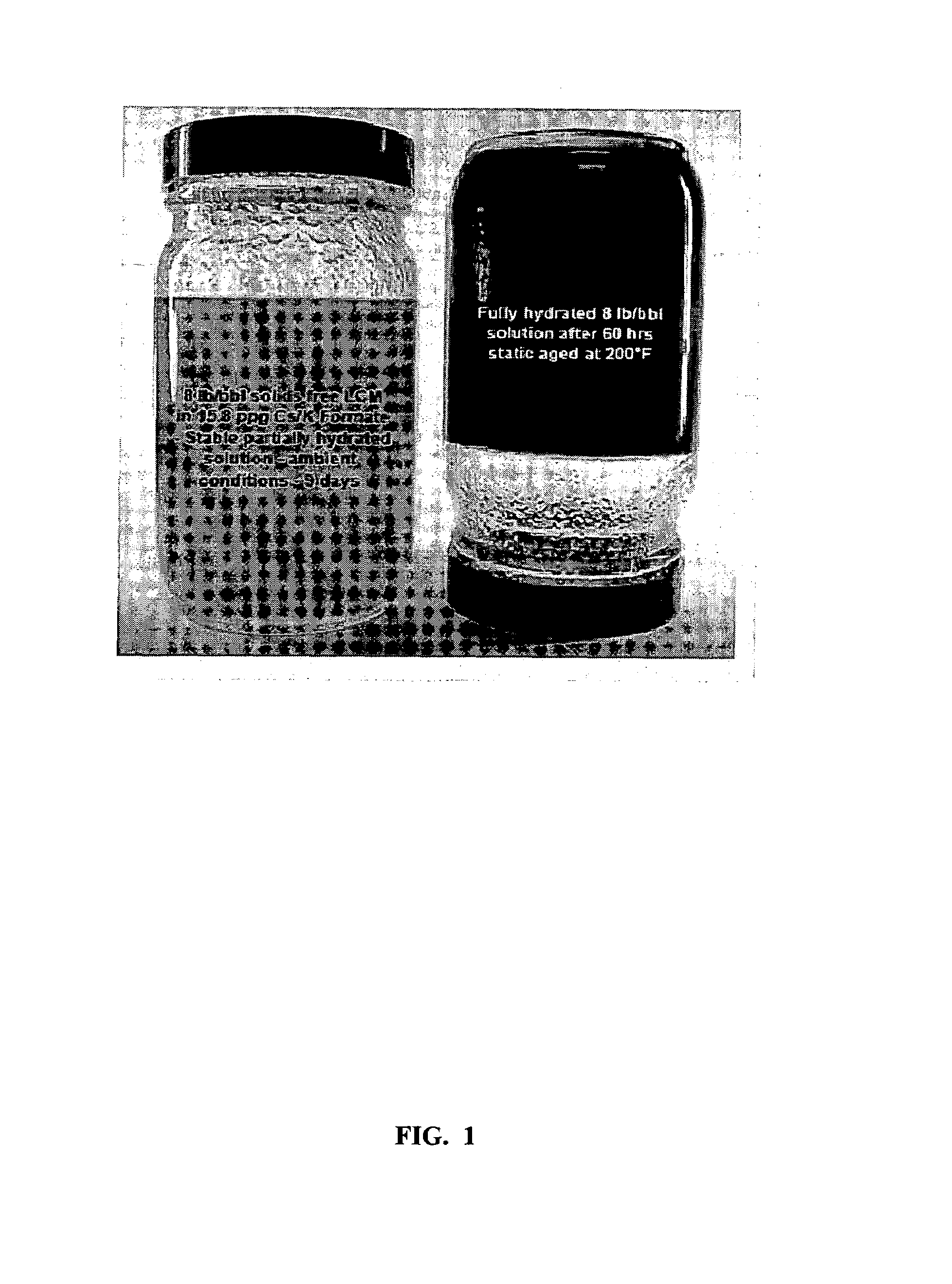Weighted zero solids loss circulation, fluid loss and insulating annular space fluid systems
a circulation and fluid system technology, applied in the direction of insulation, sealing/packing, borehole/well accessories, etc., can solve the problems of slow or rapid loss of drilling mud, high cost of complex drilling mud, and high cost of drilling a well, so as to reduce the rate of dissolution of the composition of the present invention and achieve the effect of easy separation
- Summary
- Abstract
- Description
- Claims
- Application Information
AI Technical Summary
Benefits of technology
Problems solved by technology
Method used
Image
Examples
example 1
[0067]In the following example, a loss circulation fluid was prepared by taking a 15.8 lb. per barrel of a blend of cesium formate and potassium formate buffered pH of 10.02. In particular, the cesium formate was present in an amount of 48 wt % of a 2.2. s.g. cesium formate solution and the potassium formate was present in an amount of 52 wt % of a 1.57 s.g. potassium formate. In this example, 2 lbs. per barrel, or 5 lbs. per barrel, or 8 lbs. per barrel of carboxymethyl guar was present in the loss circulation fluid. The material was subjected to a standard Fann 35 viscometer test to determine the rheological properties of the three fluids which involved subjecting the three loss circulation fluids to a rotating blank having standard readings taken at 600, 300, 200, 100, 6 and 3 rpm or a range of various settings to achieve a desired rpm as shown in the table below.
[0068]The table below represents the typical initial properties of an oilfield fluid system which is run on a Fann 35 ...
example 2
[0071]A Fann 70 rheological profile on a sample of the fluid in Example 1 was conducted. The fluid was the buffered 15.8 ppg Cs / K Formate with 8.0 lbs / bbl LCM. The fluid was heated from 75° F. to 375° F. in 25° F. increments. At each temperature, the Fann 70 reading at 60 rpm and 6 rpm was taken. A second Fann 70 test was run to measure the increase in viscosity of the fluid while maintaining a constant temperature of 200° F. and pressure of 400 psi. This test was run for 19 hours.
[0072]The purpose of the first Fann 70 test was to determine at what temperature the fluid began to show an increase in viscosity. The test was continued to determine the maximum temperature that the fluid would withstand. The purpose of the second test was to determine if viscosity would increase with time while holding a constant temperature and pressure on the fluid.
First Fann 70 Test
[0073]The fluid showed a rise in 60 rpm and 6 rpm values between 150° F. and 175° F. The fluid continued to gain viscosit...
PUM
| Property | Measurement | Unit |
|---|---|---|
| temperature | aaaaa | aaaaa |
| temperature | aaaaa | aaaaa |
| pH | aaaaa | aaaaa |
Abstract
Description
Claims
Application Information
 Login to View More
Login to View More - R&D
- Intellectual Property
- Life Sciences
- Materials
- Tech Scout
- Unparalleled Data Quality
- Higher Quality Content
- 60% Fewer Hallucinations
Browse by: Latest US Patents, China's latest patents, Technical Efficacy Thesaurus, Application Domain, Technology Topic, Popular Technical Reports.
© 2025 PatSnap. All rights reserved.Legal|Privacy policy|Modern Slavery Act Transparency Statement|Sitemap|About US| Contact US: help@patsnap.com

